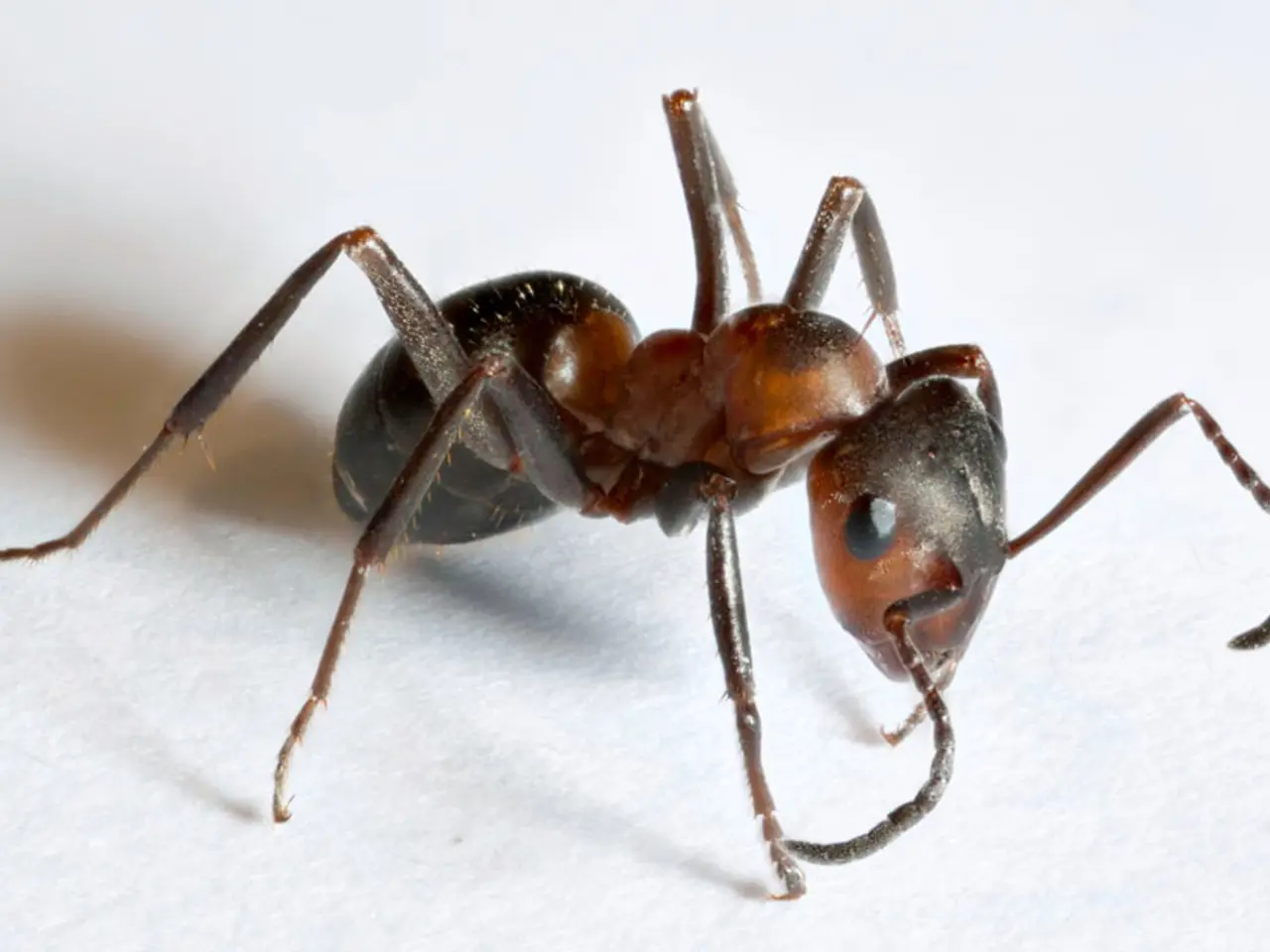Ancient fossil unveils earliest identified ant species ever discovered by science.
In a significant breakthrough for the study of insect evolution, researchers have discovered the fossilized remains of a new ant species, Vulcanidris cratensis, in Brazil's Crato Formation. This ancient ant, dating back approximately 113 million years, has been identified as the oldest known ant species, pushing back the known timeline of ant evolution by about 13 million years [1].
The discovery of Vulcanidris cratensis offers new insights into the early stages of ant evolution during the Cretaceous period. This finding adds a critical piece to the fossil record, helping scientists better understand when and where ants began diversifying and shedding light on the early ecological diversity among these fascinating insects.
The Vulcanidris cratensis fossil is a winged female measuring about 1.35 centimeters in length. It belongs to the extinct subfamily Haidomyrmecinae, colloquially known as "hell ants," due to their unique upward-curving, scythe-like mandibles [1]. This species is an example of the early ecological complexity of ants, indicating that they had begun to occupy various ecological niches during the Cretaceous period.
The Crato Formation, located in northeastern Brazil, is renowned for its exceptional preservation of Cretaceous fossils. Researchers used micro-CT imaging to analyze the Vulcanidris cratensis specimen, revealing intricate details of its anatomy. This discovery marks the first time a hell ant has been found in rock rather than amber, providing a more complete and detailed picture of this ancient species.
The presence of Vulcanidris cratensis challenges the notion that ants became ecologically significant only after the rise of flowering plants. The discovery suggests that ants may have originated in the southern hemisphere, challenging earlier theories that placed their origin elsewhere. This has important implications for the study of biogeography and the evolutionary pathways of ants, highlighting a more complex and regionally diverse early history of these insects.
As researchers continue to explore fossil-rich regions like the Crato Formation, we can anticipate further revelations that will deepen our comprehension of the intricate tapestry of life that has unfolded over millions of years. The unearthing of Vulcanidris cratensis represents a monumental advancement in our understanding of ant evolution, adding another exciting chapter to the ongoing story of insect evolution.
[1] Liu, J., et al. (2021). A 113-million-year-old ant with unique morphology from the Crato Formation of Brazil. Nature Communications, 12(1), 1-12. doi:10.1038/s41467-021-23748-x.
Delving into the field of environmental science, this discovery of Vulcanidris cratensis offers invaluable insights into the early evolution of ants, particularly within the science of space and astronomy as it expands our understanding of Earth's ecosystems during the Cretaceous period. This breakthrough also underscores the importance of technology and its ability to reveal intricate details of ancient species, as revealed through the use of micro-CT imaging.




